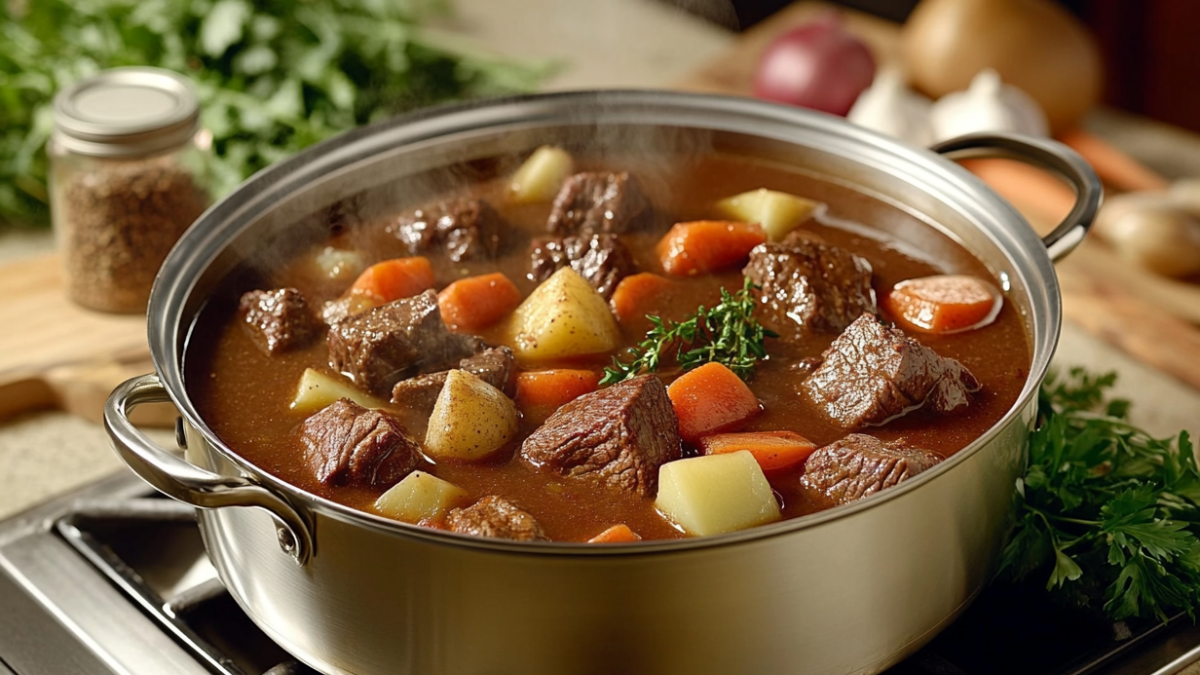Mastering Beef Stew Seasoning for Perfect Flavor
A hearty bowl of beef stew is a comforting classic, but the secret to its irresistible taste lies in the seasoning. With the right balance of herbs and spices, you can elevate your stew to culinary perfection. In this guide, we’ll explore the essentials of seasoning beef stew, from must-have spices to tips for crafting the ultimate spice blend.
Essential Spices and Herbs for Beef Stew
Creating a flavorful beef stew starts with the right ingredients. Here are the essential seasonings that should be in your pantry:
- Salt and Pepper:
- These staples enhance the natural flavors of the beef and vegetables.
- Garlic and Onion Powder:
- Adding depth and aroma to the dish.
- Paprika:
- Brings subtle heat and a vibrant color.
- Thyme and Rosemary:
- Infuse earthy and piney notes that pair perfectly with beef.
- Bay Leaves:
- Provide a robust and well-rounded flavor.
- Parsley:
- Adds a fresh finishing touch.
Crafting the Perfect Beef Stew Seasoning Blend
A balanced seasoning blend can transform your stew into a rich and savory masterpiece. Combine these ingredients for a tried-and-true mix:
- 1 tsp salt
- 1 tsp black pepper
- 1 tsp paprika
- 1 tsp garlic powder
- 1 tsp onion powder
- 1/2 tsp dried thyme
- 1/2 tsp dried rosemary
- 2 bay leaves (remove before serving)
Adjust the proportions to suit your personal taste or dietary needs.
Homemade vs. Store-Bought Seasoning Mixes
While pre-packaged seasoning blends offer convenience, crafting your own allows you to control the flavors and quality of the ingredients. Homemade blends also let you tailor the seasoning to accommodate dietary restrictions, such as low sodium or gluten-free requirements. Plus, you can experiment with unique combinations for a personal touch.
Tips for Using Seasoning at Different Cooking Stages
To achieve maximum flavor, season your stew in stages:
- Season the Beef Before Searing:
- Apply salt, pepper, and a bit of paprika to the beef for a flavorful crust.
- Season While Sautéing Vegetables:
- Add garlic, onion powder, and herbs to enhance the base flavors.
- Adjust During Simmering:
- Taste the stew halfway through and add more spices if needed.
- Finish with Fresh Herbs:
- Sprinkle parsley or thyme before serving for a vibrant finish.
Regional Variations in Beef Stew Seasoning
Different regions bring unique flavors to beef stew:
- French:
- Tarragon and marjoram add a sophisticated touch.
- Irish:
- Guinness and mustard seeds create a bold, hearty flavor.
- Hungarian:
- Paprika and caraway seeds are the stars of this variation.
- Asian:
- Soy sauce, ginger, and star anise infuse rich and aromatic notes.
FAQs About Beef Stew Seasoning
1. What are the best herbs for beef stew?
- Thyme, rosemary, and parsley are classic choices.
2. How can I thicken my beef stew without altering the flavor?
- Use cornstarch or flour mixed with water to maintain the seasoning balance.
3. Is it better to marinate beef before making stew?
- Marinating can enhance flavor, but it’s not essential if the stew is well-seasoned.
4. Can I use fresh herbs instead of dried ones?
- Yes, but use about three times the amount of fresh herbs as dried.
5. How do I fix an overly salty stew?
- Add a peeled potato to absorb excess salt or balance it with a splash of cream.
Conclusion
Seasoning is the heart of a delicious beef stew. By using a mix of essential spices and herbs, experimenting with regional variations, and seasoning at different stages of cooking, you can create a dish that’s rich, aromatic, and deeply satisfying. Start with the basics, and let your creativity take the flavors to new heights!
You Will Like Other Recipes
- Learn how to create the ultimate dish with our Homemade Beef Stew Recipes.
- Discover the basics of spices with our Guide to Essential Spices and Herbs.
- Perfect your blends with Tips for Crafting Homemade Seasoning Blends.
- Explore unique tastes with Regional Stew Variations.
- Master your cooking skills with Cooking Techniques for Perfect Stews.

